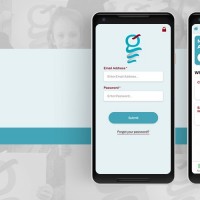Introduction
In my previous article (What Is CRM?), I explained my view on what CRM can do for you. I also said that I would follow it up with an article on how to adopt CRM. So, here it is. In this article, I will try to put all of my ideas about what CRM actually is into something that can be referenced when incorporating it into a business.
Just remember, a system is only as good as the data you put in. If you're willing to adopt CRM and get a decent system, but you're not willing to ensure good data quality or change the way you work, then just forget it right now. Don't waste your time and money.
Did I Say Business?
In the introduction, I mentioned how you may be applying CRM to your business. However, it is not always practical to implement a strategy across a whole business. Even when it is, you're likely to start implementing it in certain departments before others. What's great about CRM is that you can do just that.
You can implement CRM at company-level, department-level, or even at just team-level (although it can require a bit of influence within the rest of the organisation). The same principles apply to implementing CRM at department-level as do at company-level.
Top It All Off
The absolute key to implementing CRM is for the people at the top of the chain to be fully on-board and for everyone below them to know it.
In a company, that's going to be the Managing Director or equivalent.
At a department-level, that's going to be the head of department.
At a team-level, it's going to be the team leader.
It's not good enough just to tell your employees to adopt CRM. You have to lead by example. If you can't get past this first step, then there's no point in going on. Don't even begin to think that you can be the first person or company to properly adopt CRM without the full buy-in from the top. Just don't.
Who exactly are the people at the top?
This seems like an obvious question, but just stop and think for a moment. Can you go higher? Let's say you're implementing this at department-level, do you think the whole company may adopt it? Is it worth a conversation with the MD, or with the global HQ?
The key to this is going as high as you can while ensuring you're not involving anyone who is going to stop you from getting started!
So what do the people at the top have to do?
Well, this part is actually quite straightforward. The point of the buy-in at the highest part of the chain is to persuade/order everyone involved to also adopt the process and to ensure everything necessary is done. For example, if you need a new CRM system, sign-off on that new CRM system. If you need a team to start providing information to another team, get the steps put in place to ensure it happens.
Is that all?
That really depends on where you're trying to implement CRM. In a big organisation/department/etc, the people at the top really just need to delegate. However, in smaller organisations, they may need to be more hands on.
Get Your House In Order
Assuming you have buy-in at the top, the most sensible approach is to look at your existing processes. Why? Because there's no point in going all-guns-blazing into new and exciting areas if the things you're doing now aren't going to be in sync.
Actually, what are you doing now?
Reading this article is not the answer I'm looking for! Write down all of the processes you currently do (here are some example CRM processes). I'm aware this could be a massive task, so - if it is - do it at a high level first. Once you've got that, keep breaking things down into manageable chunks until you get the base processes (those manageable chunks can be used to keep track of progress too).
Once you have those processes, it's really over to you. You need to work out where those processes end, what data is stored and - possibly most importantly - why. Can you amalgamate those processes into one system? If not, is that because the systems you use aren't good enough or because it's just too much. Bear in mind that CRM systems can handle a lot. As I said in the previous article, the biggest instance of Sage CRM has 2,200 users.
Any tips on systems?
Why, yes! Thank you for asking! I would advise getting independent advice on systems. Internal advice can be biased, because employees don't always like change and can feel like their job may be under threat if the system changes to something they're not used to. Advice from suppliers can be biased, because they want you to use their company and their system - they don't want you snooping around elsewhere. Implementing CRM in the business is usually going to be quite a big change, so advice from a specialist is worth it, even if it's just a day to confirm your suspicions.
There are lots of systems out there that could be useful to you and your situation. However, you should make sure whichever system you get is easy to configure and is not restrictive on the changes you can make. Without mentioning anything in particular, there are some very big CRM systems out there that are not as easy to customise as they make themselves out to be. Companies can end up being drawn in by aggressive selling or cheap up-front costs, only to face hefty bills when they want to make changes. Never just look at the initial pitch. Always ensure you have a good idea of future costs for developing and maintaining the system.
The End Result
If you can't get every process working on one system, you need to look at getting the end results on one system. For example, you may have a whole system and process to generate marketing material, send out the material and record the results (click-throughs, responses, shares, likes, etc). In that case, you should be looking to feed the material that has been sent and the results into your main CRM system. That way, each customer will have a log of all the marketing material they've been sent and how they responded to it.
Keep doing this for each and every process.
Anything Else?
This article is getting quite long, so I'll make a separate article of suggestions. However, the short answer is yes! Start to think about what else could help.
Summary
- CRM can be adopted at any level of a business from business-level to department-level to team-level.
- The people at the top of the chain must be on-board, involved and must lead and enforce adoption of the CRM process.
- Look at what you're currently doing first. Do not take on anything new until you have your existing processes in order.
- Get an independent opinion on what you're doing and which systems are best for you.
- At the very least, make sure you have the end results of all of your processes in one system, even if you can't get all the actual processes in the same system.
- Once you've sorted out your current processes, look at what else you can adopt and add in to your CRM process.








































